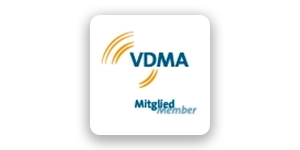Marketing
6 Steps to a Successful Content Strategy

Content
Content may be King, but Content Strategy is Queen
By now, it has long become a truism in the world of marketing: “Content is King!” This is an uncircumventable fact, now as then – especially in e-commerce and online retail. After all, those who want to successfully sell their products online must convince, satisfy, and inspire customers anew every day. And the bread and butter for this is good, high-quality content.
However, where does such content come from? Nowadays, the name of the game for companies is to plan, create, and distribute top-notch content from text to media across the entire customer journey. Marketers will be quick to add: not all content is high-quality content. And this is the precise point where the Content Strategy comes into play, providing you with an operative framework for all your future content cycles. Only with a targeted and individualized Content Strategy can you guarantee that your content fulfills the right objectives and is useful to relevant target groups. This is why smart strategizing functions as an integral part of the Content Marketing of manufacturers, brands, and retailers. You want to know how to design a meaningful Content Strategy? If that’s the case, you should keep on reading. In this blog post, we let you in on the most important steps and give you valuable tips for creating an effective Content Strategy yourself that fits your company.
“Content Strategy” vs. “Content Marketing Strategy” – the same, just in green?
A Content Strategy is not to be conflated with Content Marketing. The former relates to the operative level. It’s about putting all sorts of measures into practice which revolve around your content, e.g. the analysis of the customer journey, editorial plan, and task distribution – and not to forget the actual content itself and its distribution into all relevant channels, such as the corporate website or social media account. The Content Marketing Strategy, in turn, is a much more comprehensive concept and forms the strategic frame for your Content Strategy. Content Marketing determines the overall strategic outlook of a company’s marketing: designing relevant content and providing it to well-defined target groups. Accordingly, Content Marketing puts your target group front and center, rather than the product. In this sense, then, Content Strategy is only a subset – albeit an integral subset – of the overarching Content Marketing.
Step 1: Get to Know Your Target Group
Do you know your customers? Do you know what they want – or do you only believe that you know what they want? In order to create a suitable Content Strategy, you are to familiarize yourself with your customers. Only this way can you produce content that your potential customers actually want to consume. One objective method for quickly getting acquainted with your target group is the Buyer Persona. As part of this method from the world of marketing, you develop a concept of the needs, pain points, and wishes of your ideal customer. Subsequently, this helps you in empathizing with your target group and creating made-to-measure content.
Furthermore, it’s key to listen closely to what your customers have to say by systematically gathering feedback and analyzing it. You can collect feedback by your customer base by utilizing tools such as Google Analytics or something as simple as product return forms. Among other places, social media is a top platform to learn about your target group. Be it in the form of polls or your direct interaction with them in comments – this is where you will gain insights about your target groups straight from the source.
Step 2: Don’t Forget about SEO!
Define your most important keywords and topics. Now that you’ve learned more about your customer, SEO should be the next topic on your agenda. Make the beginning with research on keywords, themes, and search criteria which your customers type into search engines. Relevant keywords may fall on both sides of the spectrum: very frequent and popular keywords, on the one hand, or keywords targeting long-tail products or market niches, on the other. The advantage of frequently searched keywords is that you can utilize them to reach out to a large audience; the disadvantage is that you face an equally large competition, meaning that your company may not make it to the top 3 search results. On the opposite side, less people base their searches on niche keywords, though they still prove their worth since they slowly but surely accumulate brand visibility and carry their weight on the search results pages of search engines. Our tip: Striking just the right balance is key! Specify a broad spectrum of the most different keywords in order to make sure that you’re accounting for all relevant search criteria.
For your keyword research, it’s helpful to know which keyword is relevant to your target group at a given stage of the sales funnel. Depending on the stage they’re currently in, consumers have different questions for which they expect a good solution. For example:
- What is Content Strategy?
- How important is Content Strategy?
- How do I create a Content Strategy?
- Who is the best service provider for Content Strategies?
Steps 3: Content Knows Many Forms
The digitization and the great technological progress that comes with it has made it much easier to make good use of all sorts of content formats. How does the saying go? Content is everything and everything is content. As part of your strategy, define what kinds of content you want to provide in which format and on which target platform. Popular formats include for example:
- Video
- Infographs
- Product content in form of product data and information
- Checklists
- Whitepapers
- E-books
- Use cases und success stories
- Podcasts
- Blogcasts
There is a rich offer of content formats to choose from. Which is why, as part of your content planning, you should focus on determining which formats are best suited for your target group. However, also keep in mind what kind of formats your team is best capable of producing.
💡 eggheads Insider Tip:
Analyze your past content as part of a content audit. This way, you can quickly identify which formats generate the most conversions or inspired the most online interactions. If, for example, your audio content counts more clicks than the views of your YouTube videos, it may be a good strategy to shift your focus to podcasts instead.
Step 4: Create a Rock-solid Content Foundation
To produce high-quality content, you require a well-founded basis for all data and information. Be it podcasts, blog entries, social media posts, or exciting product descriptions – each and every type of content builds on correct and up-to-date input. When creating content for your product, for example, it’s necessary to communicate the current technical specifications. Incorrect product content translates into a negative purchase experience. The consequences: higher return rates, bad reviews, and, in the worst-case scenario, your brand image does also take a hit. To take preventative measures against such outcomes, your Content Strategy should incorporate all kinds of content – even those which seem banal, if not even trivial: product names, product properties, etc.
This content is usually scattered all over the company – in excel tables or PDF documents, in this or that corporate department. To make sure that nothing is overlooked, you should first establish a central data foundation for your product content. With a PIM system, this poses no problem whatsoever. As the single source of truth, the PIM system will guarantee that your data basis is always up to date and consistent across the board – allowing your marketing team to always draw from contradiction-free data as input for their content.
Step 5: Create an Editorial Calendar
For a successful strategy, the right content plan is half the battle. A content plan is much like the guiding thread running through all topics, formats, and personnel resources, keeping everything together. With it, you keep track of all content ideas and situate them in their adequate time frames. A blog entry on gingerbread by a food supply chain, for example, is much more suited for Christmas time than the summer season. Accordingly, experts recommend planning marketing releases in quarterly periods.
In particular, the editorial calendar is a useful tool for managing your personnel resources. Always keep in mind: content is teamwork! Accordingly, the knowhow of specific topics is distributed among your company’s various departments. Note down in your editorial calendar who provides the input for what kind of content, when they’re free to do so, and what other resources are required to finalize things – this may include, for example, graphic designers, social media managers, editors, etc.
Create an editorial calendar in which each and every aspect of the content is assigned to the respective person in response. This will give you the overview required to manage content cycle upon content cycle.
Step 6: Drum Up Business
Content Marketing doesn’t stop with the release of your content. Neither the best blog entry nor the most exciting podcast episode will bring in the desired results if it doesn’t even reach its target audience. As soon as you’ve produced the content, the name of the game is to distribute it to the relevant channels and beat the big drum for it.
While doing so, keep in mind that the channels on which your content is shared are equally as important as the channels on which they’re actually released. Target the channels on which your target group is active. If your target group consists of consumers in age groups older than 35 years, Snapchat may not be the optimal choice to promote your content and brand.
💡 eggheads Insider Tip:
Utilize tools for marketing automation to make your content generation process run even more smoothly, while also distributing it to the respective target channels or social networks in an equally efficient manner. With a PIM system, you can set up your distribution process so that you can set things into motion at the click of a button or with condition-based triggers in a fully automated manner – be it to supply the corporate website, marketplaces, online shops, or social networks. This way, you hit two birds with one stone by working smarter and investing less resources, be it personnel or finances.
Data is King!
To establish the perfect strategy as part of your overall Content Marketing, you will need one thing before anything else. A perfect, consistent data foundation – be it your customer’s feedback and activity data or technical data which serves as the meat of your content. In a digital world, data is money and power – as the saying goes: data is king!
To this end, it’s also important for the success of your Content Strategy to collect all this product data, centralize it, and automate the corresponding product data processes. This is because the sheer quantity of data with which we find ourselves confronted on a daily basis can no longer be handled manually.
In just a few quick steps, your product data can be put to good use and you can set up an effective Content Strategy. You can find out how this works in our latest whitepaper: Content Strategy 2.0. Download it now for free and benefit from our expertise and the know-how of our product experts.
From Our Blog
You may also be interested in the following articles







